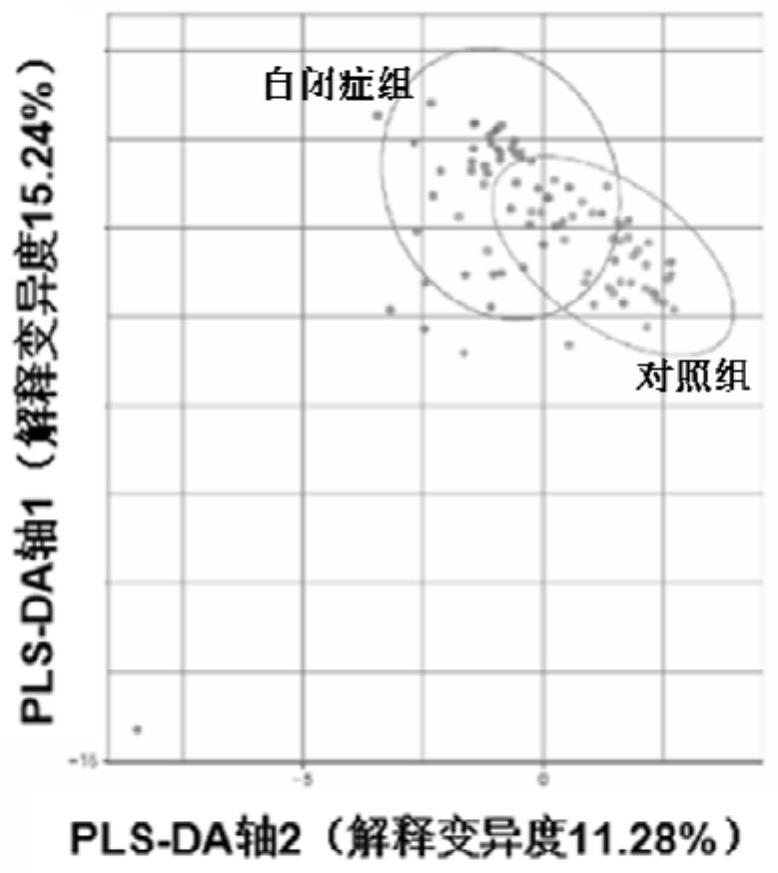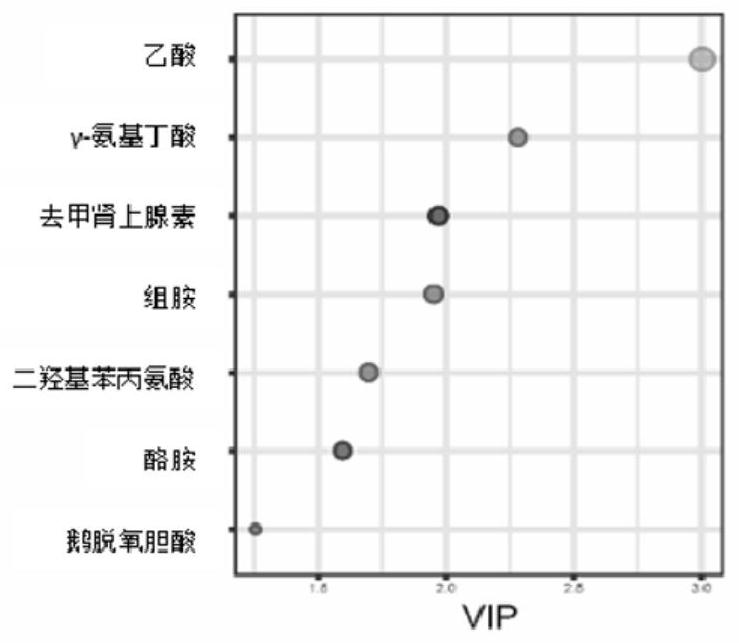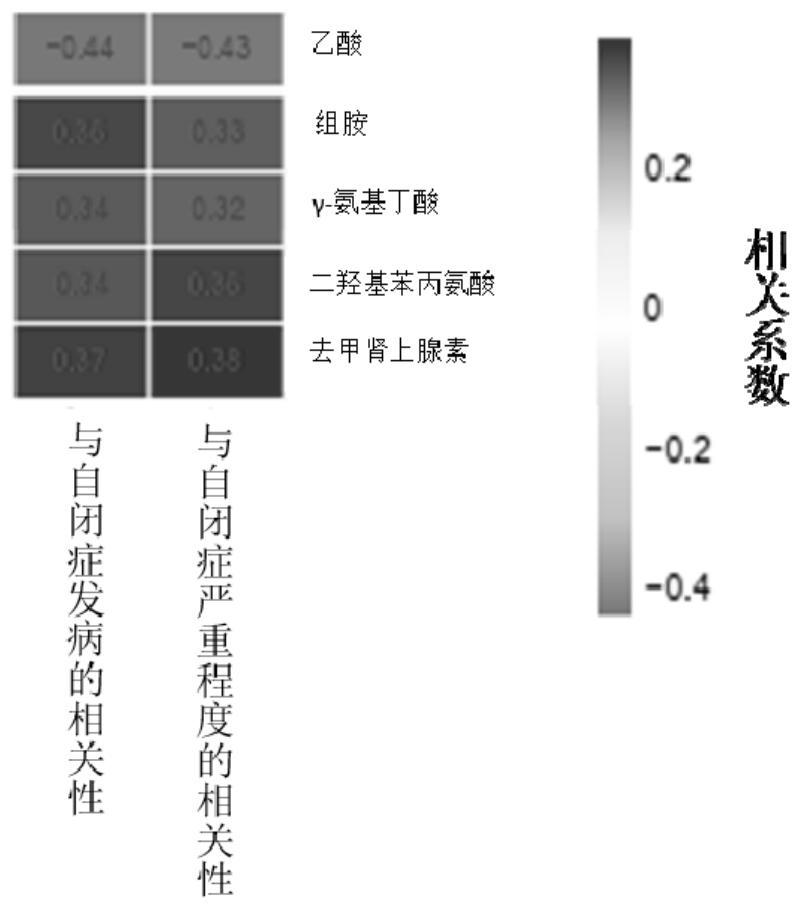Application of intestinal microorganism metabolite in preparation of autism diagnosis kit
A technology of intestinal microorganisms and diagnostic kits, applied in biological testing, disease diagnosis, biomaterial analysis, etc., can solve the problems of no molecular biology diagnostic standards, low diagnostic accuracy, and limited development of treatment methods, and achieve important medical applications Prospect and economic value, high diagnostic accuracy, effect of high accuracy
- Summary
- Abstract
- Description
- Claims
- Application Information
AI Technical Summary
Problems solved by technology
Method used
Image
Examples
Embodiment 1
[0023] Determination of acetic acid content in the stool sample of embodiment 1
[0024] In this example, stool samples from healthy people and patients with autism were detected, and then correlation analysis was performed to determine the correlation between the level of acetic acid, an intestinal microbial metabolite in stool samples, and the onset and severity of symptoms of autism. Specific steps are as follows:
[0025] (1) Sample source
[0026] Autism group: from Shanxi Zhou Autism Rehabilitation Research Institute, age distribution 0-14 years old. Inclusion criteria: ①According to the latest international diagnostic criteria, that is, "Diagnostic and Statistical Manual of Mental Disorders, 5th Edition, DSM5", a total of 49 patients diagnosed with autism, of which Mild in 41 cases, severe in 8 cases; ②Gender is not limited. Exclusion criteria: ① suffering from other psychiatric diseases (such as schizophrenia) and other neurodevelopmental disorders; ② suffering from...
Embodiment 2
[0040] Determination of content of tyramine, histamine, γ-aminobutyric acid, dihydroxyphenylalanine and norepinephrine in the stool sample in embodiment 2
[0041] Continue to analyze other intestinal microbial metabolites on the collected stool samples. The specific steps are as follows:
[0042] (1) Preparation of the second sample (the second sample and the first sample in Step (3) of Example 1 are two samples derived from the same stool sample)
[0043] Weigh an appropriate amount for each portion, add 1% FA 200 μL pre-cooled ultrapure water, perform MP homogenization, then add 1% FA 800 μL methanol / acetonitrile (1:1, v / v), vortex mix, low-temperature ultrasound for 30 minutes, - Incubate at 20°C for 1h to precipitate protein, centrifuge at 14000rcf at 4°C for 20min, take the supernatant and dry it in vacuum. Add 1% FA in 100 μL ACN / water (1:1, v / v) for reconstitution during mass spectrometry detection, centrifuge at 14000 rcf at 4°C for 15 min, and take the supernatant f...
Embodiment 3
[0050] Example 3 Correlation Analysis of the Content of Gut Microbial Metabolites in Stool Samples and Autism
[0051] Utilize PLS-DA analysis (Partial Least Squares Discriminant Analysis) to measure the content of intestinal microbial metabolites in the stool samples of the autism group and control group measured in Example 1 and Example 2.
[0052] The result is as figure 1 As shown, the two groups of samples (autism group and control group) were divided into two circles, indicating that the overall expression patterns of metabolites in the two groups were different, so the concentration of microbial intestinal metabolites can significantly distinguish healthy subjects. and autistic patients (11.28% of the explained variance).
[0053] Such as figure 2 Shown is the variable importance for the projection (Variable Importance for the Projection, VIP) in the PLS-DA analysis. VIP is the variable weight value of the PLS-DA model variable, which can be used to measure the impa...
PUM
 Login to View More
Login to View More Abstract
Description
Claims
Application Information
 Login to View More
Login to View More - R&D
- Intellectual Property
- Life Sciences
- Materials
- Tech Scout
- Unparalleled Data Quality
- Higher Quality Content
- 60% Fewer Hallucinations
Browse by: Latest US Patents, China's latest patents, Technical Efficacy Thesaurus, Application Domain, Technology Topic, Popular Technical Reports.
© 2025 PatSnap. All rights reserved.Legal|Privacy policy|Modern Slavery Act Transparency Statement|Sitemap|About US| Contact US: help@patsnap.com



